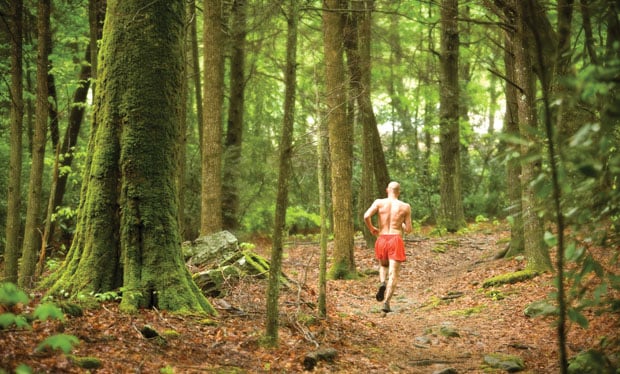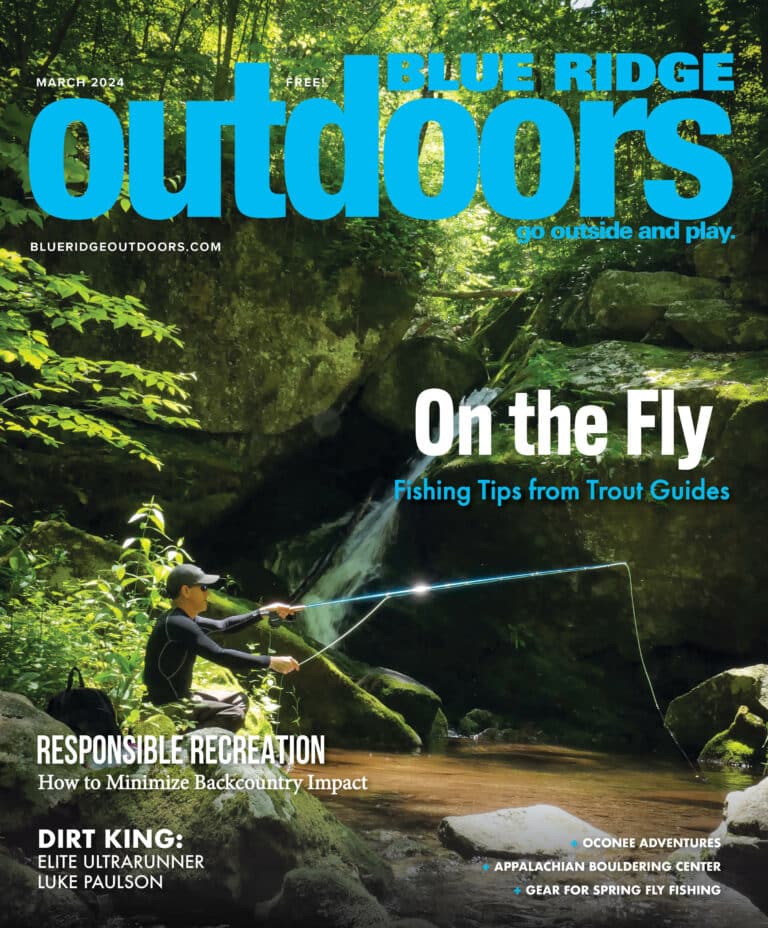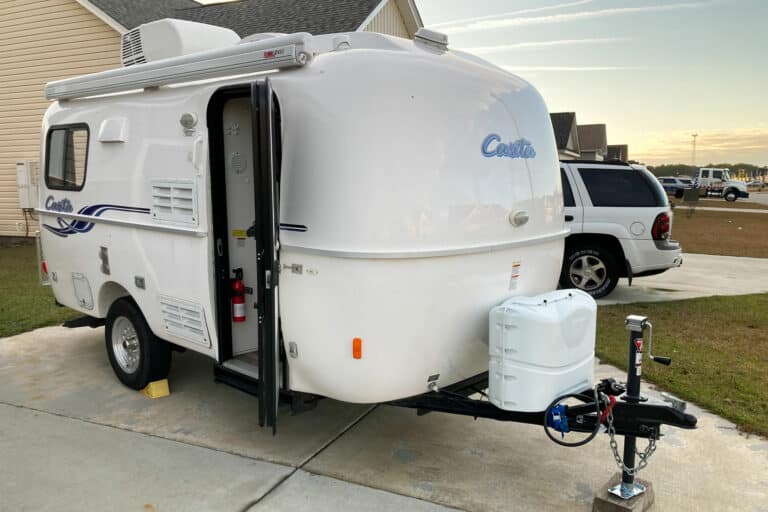Will Harlan runs through an ancient forest of beech and hemlock. Photo: Steven McBride
I am not a runner. I’m a chaser.
When I was four years old, I chased my dad each night on his two-mile jog around the neighborhood. In high school, my buddies and I lit fireworks beside a police car, and (barely) got away on foot. In college, I climbed the stadium wall and evaded the pursuit of security guards to watch the final game of the World Series.
After my prankish college days, I turned to trail running. I didn’t pay much attention to splits or times; I simply loved the feeling of scampering through the forest eluding a chase pack or reeling in the lead harrier. I ended up winning a few events, but I always viewed races more like a grown-up game of cops and robbers.
Then I got a job, got married, and became a dad. Instead of chasing the trail, I was chasing my naked three-year-old son around the living room.
I woke up one day and found myself in a 35-year-old body. Gone were the lithe, spring-loaded legs of my youth. It was time to face a hard truth: I would never be as fast as I once was.
But I felt like I still had some kick left in me. So I dreamed up one final challenge: an unsupported 72-mile solo run on the Appalachian Trail across Great Smoky Mountains Park, the wildest, tallest, and most rugged terrain in the East. No checkpoints or crew support. No competitors or companions. Just me and the mountains.
I woke up at 2 a.m. and drove to Davenport Gap on the eastern edge of the Smokies. In the dark, I shouldered my pack, clicked on my headlamp, and began running up the Appalachian Trail. For my 72-mile journey, I carried only a small pack of food and water, along with a hand-sketched map of springs along the trail.
The half-million acres of Great Smoky Mountains National Park is home to more than 1,500 black bears—roughly two bears per square mile. As I bounded up the moonlit trail, I felt their glowing eyes watching me silently through the rhododendron thickets and rocky hollows. I thanked them for allowing me to pass through their home in the middle of the night.
I reached Mount Cammerer around twilight. Giant old-growth hemlocks, yellow poplars, and sugar maples lined the trail, and I brushed my fingers across their furrowed bark. It was intoxicating to exchange my breath with ancient trees.
The morning sun crested the peaks and burned a hole through the gauzy clouds. I plunged down to Tri-Corner Knob Shelter and bushwhacked about a quarter-mile to refill my water from a spring. The weight of the full water bottles dug into my back.
I checked my watch—ten minutes slower than I had hoped. I hadn’t really trained for this adventure. Work and family commitments had increased, and our organic farm had kept me busy weeding gardens, planting squash, and milking goats, leaving little time for training.
But there was no time left for excuses: I was a 35-year-old dad and husband, and this was probably my last chance to chase the Smokies speed record. Regardless of my finishing time, I wanted to pour every ounce of myself into the effort. Whenever I felt my pace slowing, I asked one question: is this the best I can give?
The cool, wet, north-facing trail that I had run in the early morning twisted south, becoming a bed of dry rubble underfoot. I rolled through the Sawteeth, a section of jagged, narrow ridgeline trail. Sweat-drenched and thirst-slaked, I refilled my water pack at Icewater Spring near 6,000-foot Mount Kephart.
Nearby, I heard a hermit thrush’s gurgled song—which sounded like notes from my son’s bathtub water flute. The thrush’s liquid melody echoed through the deep forest. He could have been courting a female or defending his territory, but he seemed to be singing simply for the joy of it. Could I do the same? Did I always need an ego-enlarging reason—a goal, a race, a finish line? Could I run not to enhance myself, but to lose it in the silence of the forest?
Violets and trillium blanketed the trail near the Charlies Bunion overlook. I almost didn’t stop, but I forced myself to enjoy a panoramic pause. For three decades, I had been running too fast to really notice the scenery. It was all just a blurry tunnel of green. But atop the Bunion, I was beginning to glimpse the value of stopping—or at least slowing down slightly—to smell the wildflowers.
I nimbly danced down the boulder-strewn trail toward Newfound Gap, but my progress slowed on the eight-mile climb up to 6,643-foot Clingmans Dome, the highest point on the entire Appalachian Trail. For the first time, I began doubting my ability to finish. My wobbly legs buckled, my breathing was raspy, my head cloudy.








